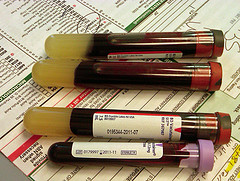Good Luck Trying To Find Out How Much A Medical Procedure Will Cost

(jaubele1)
A new report from the folks at the Government Accountability Office has confirmed what anyone who has ever tried to get a clear estimate on what a medical procedure already knows: There’s a good chance you can’t.
“Several health care and legal factors may make it difficult for consumers to obtain price information for the health care services they receive, particularly estimates of what their complete costs will be,” writes the GAO.
Among the health care-related factors that muddy the waters include billing from multiple
providers, the variety of insurance benefit structures, and the fact that you can’t always tell in advance if additional procedures or tests will be needed. And for patients with annual deductibles, the provider would need to know how much of that deductible has been paid before provide a complete estimate.
And of course there are the legal issues that make the picture even hazier. According to insurance providers that spoke to GAO, contractual obligations with providers may prohibit the sharing of negotiated rates with the insurer’s members. There are also concerns from providers and insurers that sharing these negotiated rates would reveal proprietary information or bring up antitrust issues.
GAO looked at eight pricing transparency initiatives — two from private insurers; five state-level public initiatives; and one federal — and found a lack of consistency about the information made available directly to consumers:
The price information made available by the selected initiatives ranges from hospitals’ billed charges, which are the amounts hospitals bill for services before any discounts are applied, to prices based on insurance companies’ contractually negotiated rates with providers, to prices based on claims data that report payments made to a provider for that service.
The price information varies, in large part, due to limits reported by the initiatives in their access or authority to collect certain price data. In addition to price information, most of the selected initiatives also provide a variety of nonprice information, such as quality data on providers, for consumers to consider along with price when making decisions about a provider.
GAO did find two transparency initiatives — one state-level initiative in New Hampshire and one available to Aetna customers — that were able to provide an estimate of a consumer’s complete cost.
“The two initiatives are able to provide this information in part because of the type of data to which they have access–claims data and negotiated rates, respectively,” explains GAO. “For the remaining initiatives, they either do not use more meaningful price data or are constrained by other factors, including concerns about disclosing what providers may consider proprietary information.”
Want more consumer news? Visit our parent organization, Consumer Reports, for the latest on scams, recalls, and other consumer issues.

